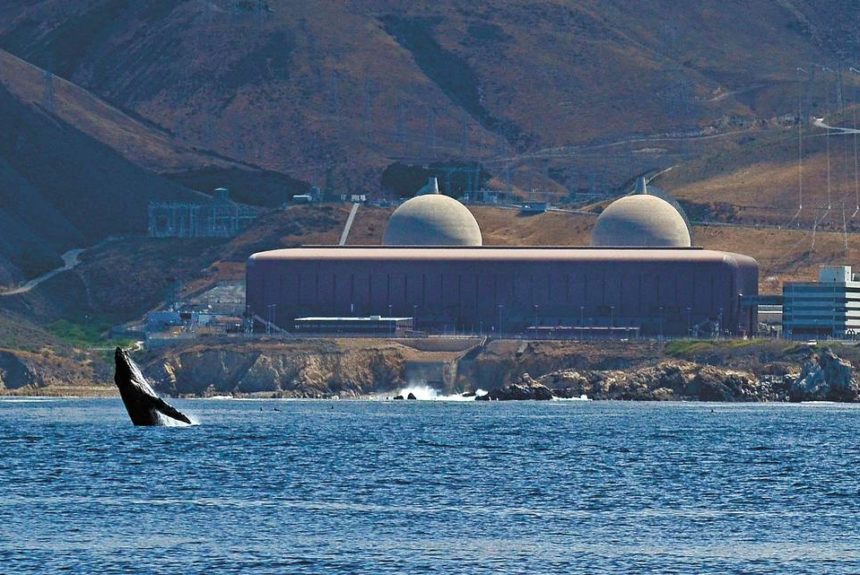California and Germany have both made climate change a public policy priority. California Governor Gavin Newsom said, “Climate change is an existential threat. Every nation, region and community has interest and agency in rising to this challenge.” German Chancellor Angela Merkel warned that climate change will determine mankind’s destiny and emphasized, “That is why I use all my strength to ensure that Germany makes its contribution – ecologically, economically, socially – to getting climate change under control.”
Unless that agency and contribution includes nuclear power.
>>>READ: Innovations Show Promise and Challenges with Energy Transition
Even though nuclear energy is the world’s largest source of emissions-free electricity, California and Germany have committed to moving away from nuclear. As part of a transition to more renewables and reducing greenhouse gas emissions to net-zero by 2045, Germany closed three of its six remaining nuclear plants in operation. The last three will close by the end of the year. Germany has also ramped down its coal generation while ramping up renewable power to meet its climate targets. Germany’s approach, however, is not the most efficient one. Ronald Bailey of Reason Magazine points out that France, which derives two-thirds of its electricity from nuclear, has a much lower rate of carbon dioxide emissions per kilowatt hour compared to Germany (51 grams per kWh vs 311 grams per kWh).
In 2018, California made a similar decision to close its lone nuclear plant at Diablo Canyon when the operating license expires in 2025. California, which is the nation’s largest importer of electricity and has the third highest electricity rates, receives about 8 percent of its electricity from the Diablo Canyon plant.
Steven Chu and Ernest Moniz, the two energy secretaries serving during President Obama’s administration, recently argued that California should reconsider and keep the plant open. They point to a Stanford-MIT study that finds “[d]elaying the retirement of Diablo Canyon to 2035 would reduce California power sector carbon emissions by more than 10% from 2017 levels and reduce reliance on gas, save $2.6 Billion in power system costs, and bolster system reliability to mitigate brownouts; if operated to 2045 and beyond, Diablo Canyon could save up to $21 Billion in power system costs.”
The study also finds that the plant itself could be critical for a desalinization plant and advancements in clean hydrogen. Desalination removes the salt from ocean water and converts it to freshwater, a commodity California desperately needs. While desalination plants are very expensive, Diablo Canyon could provide a desalination plant with a low-cost, stable energy supply. Moreover, as hydrogen develops as a clean transportation fuel, Diablo Canyon could be a cheap, clean energy source for a hydrogen plant. The study estimates, “Diablo Canyon hydrogen could cost up to 50% less than hydrogen produced from solar and wind power with a small fraction of the land footprint.”
>>>READ: MIT Climate Scientist Says Policymakers Should Prioritize Nuclear Energy
Of course, how California and Germany make up for its loss of nuclear depends on several factors. Replacement power sources, electricity demand and economic growth will all determine what future energy prices and emissions profiles look like. However, reliance on 100 percent renewable power without the integration of other low or zero-carbon energy sources would likely be costly, both economically and environmentally.
One study in the journal Joule ran more than 900 scenarios with different fuel mixes to decarbonize the power sector. The study projected future scenarios with a heavy reliance on wind, solar and batteries and other scenarios that included nuclear, bioenergy and natural gas along with carbon capture and sequestration. The study concludes, “Across all cases, the least-cost strategy to decarbonize electricity includes one or more firm low-carbon resources. Without these resources, electricity costs rise rapidly as CO2 limits approach zero. Batteries and demand flexibility do not substitute for firm resources.” Renewables and demand response are integral parts of the solution, but they shouldn’t be exclusive parts of the solution.
With respect to nuclear, it is understandable to close economically unviable plants. Taxpayers and ratepayers should not prop up financially struggling plants as it would be detrimental to households, businesses, and investments in new, innovative technologies. It is also worth considering, however, how policies affect the economic viability of nuclear power, whether it’s through renewable mandates that disadvantage nuclear or an antiquated regulatory environment that artificially inflates the cost. It is outright problematic to close safe, reliable and economically competitive plants.
In a bit of welcome news, the European Union announced that nuclear energy (and natural gas) will count as sustainable investments. With innovative startups for small modular reactors and microreactors, nuclear energy should have a bright future. Solutions already exist for waste management. Public policymakers should provide the conditions to unleash that innovation rather than stymie it.
The views and opinions expressed are those of the author’s and do not necessarily reflect the official policy or position of C3.
